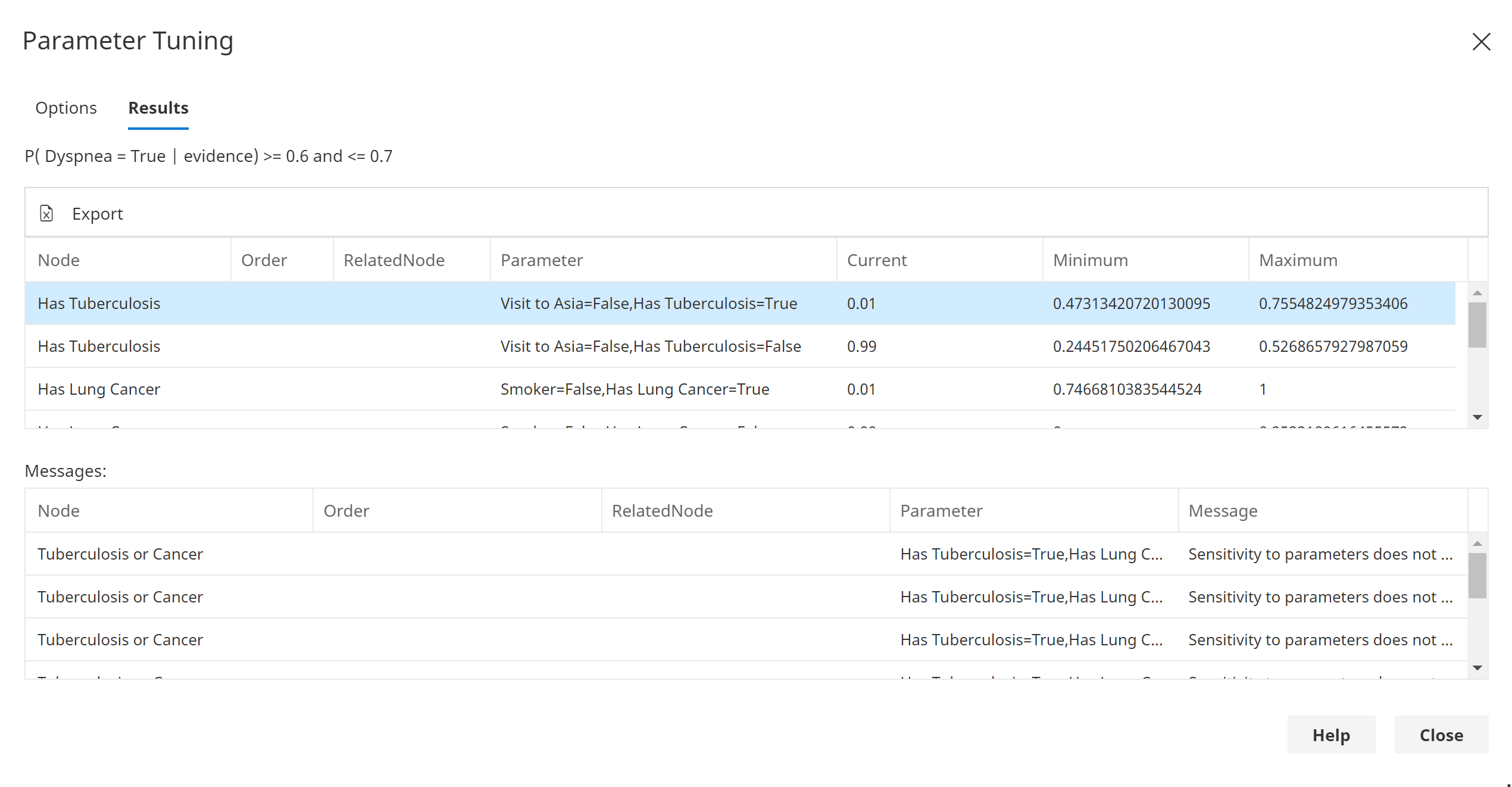Parameter tuning
Introduction
Parameter tuning is used to find the value/range of a parameter value which results in a certain probability (or range) for a variable of interest (the hypothesis variable).
If you want to determine how the probability of the hypothesis variable is affected when the value of parameters in the network are changed, see Sensitivity to parameters.

Simple
In Simple mode, parameter tuning will look at changes in the parameters in the network which result in the probability of the hypothesis state (given any evidence) P(h|e) lying between a minimum and maximum value specified in the Constraint section.
Note that the minimum and maximum constraint values can be equal.
The algorithm works by calculating (for each parameter in the network) the one way sensitivity function for the hypothesis state. It then evaluates the sensitivity function to see if the constraint can be satisfied.
Difference
In Difference mode, parameter tuning works in the same way as in Single mode except that instead of a single hypothesis we are interested in the difference between two hypothesis given the evidence e, i.e. P(h1|e) - P(h2|e).
Note that the minimum and maximum constraint values can be equal.
Ratio
In Ratio mode, parameter tuning works in the same way as in Single mode except that instead of a single hypothesis we are interested in the ratio between two hypothesis given the evidence e, i.e. P(h1|e) / P(h2|e).
Note that the minimum and maximum constraint values can be equal.